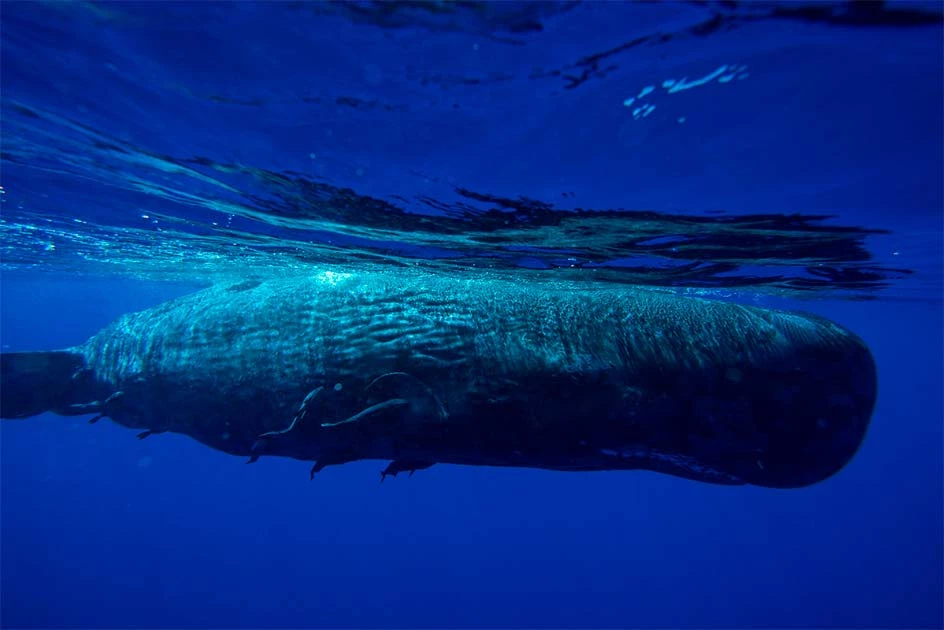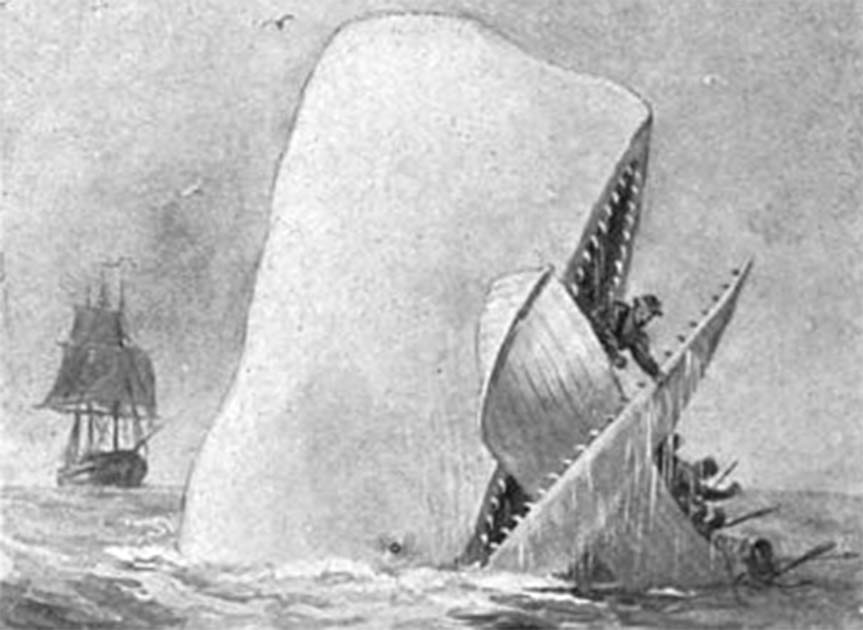“Consider the subtleness of the sea; how its most dreaded creatures glide under water, unapparent for the most part, and treacherously hidden beneath the loveliest tints of azure” – Herman Melville.
It is said that we, as humans, know more about outer space than we do the ocean. As doubtful as that might seem, over 95% of the ocean has never been explored, which seems impossible for something so close to home.
When creatures from the ocean floor and deep depth are caught or washed up onto the beach, they tend to look like monsters with strange flesh, big eyes, massive teeth, or a body that can’t quite be described. One of the most well-known monstrous sea creatures is Moby Dick.
But what if there was a vicious whale centuries before Melville put pen to paper? This is the tale of Porphyrios, the first account of a destructive whale. And, unlike the white whale, Porphyrios was very real.
Porphyrios
Long before Herman Melville published his classic novel Moby-Dick; or, The Whale, in 1851, the people of Constantinople faced their own giant ship-swallowing whale. The name of this whale was Porphyrios, but the origin of the name is a bit of a mystery.
Some scholars claim that the name was a derivative of the charioteer, Porphyrius, who was popular during the Byzantine era. Other scholars believe the name comes from the mythological giant Porphyrion, who waged war against the ancient Greeks during the Gigantomachy.

In the 20th-21st century, a new origin for the name has been suggested. Porphyrios might have come from the word porphyra, which describes a deep purple hue/imperial purple in Greek. Porphyrios might have had grayish-purple or dark wine-colored skin, and his name came from his coloring. Some believe that the name Porphyrios should be interpreted as “purple boy,” which is a cute name for a fearsome beast.
Porphyrios’s species has never been clear, but some descriptions of the whale’s size, age, bad attitude, and coloring suggest he might have been a sperm whale. Sperm whales can be found in all oceans, from the poles to the equator, wherever there are ice-free deep waters.
Not only are sperm whales huge, but they also have little to no natural predators (unless an entire pod of killer whales sets out looking for trouble) and can live up to 70 years. However, there is a possibility that Porphyrios was not a sperm whale but possibly “an orca of unusual size.”
An unusually large orca might have been Porphyrios because of the natural behavior of sperm whales. Sperm whales are not typically found in the Black Sea because the entrance is too shallow for sperm whales to reside. Orcas, however, are found in the Black Sea.
The Byzantine Historian
The information we know about Porphyrios comes from the 6th-century Byzantine historian Procopius. The whale can be found in both his History of the Wars and The Secret History. Procopius states that Porphyrios was a massive beast that measured 45ft (13.7m) long and 15ft (4.6m) wide.
During antiquity and through to the middle ages, whales were seen as sea monsters due to the lack of knowledge about what a whale was, or the different kinds of whales. According to Procopus, Prophyrios terrorized ships near Constantinople for more than 50 years. The whale had a habit of moving elsewhere for long periods but was often just below the waves in the Bosporus Strait and the Black Sea.
Unlike other stories about large whales destroying whaling ships, Porphyrios would attack any and all ships if he pleased. Fishing, merchant, and warships were all at risk of being Porphyrios’s next enemy.
Porphyrios’s reputation for demolishing and drowning ships at random meant the sailors on ships in the area were all terrified of the behemoth of a whale. The fear of Porphyrios was so intense that it was common for ships to make detours to avoid the waters in which the whale was known to swim.
- U-Boat 85 and the Sea Monster: Terror from the Deep
- A Mighty Bang: Are We In Danger From Exploding Whales?
The whale was causing so much panic and damage that Emperor Justinian I stressed that the whale needed to be captured to protect the waters ships sailed in. Even though Justinian wanted to vanquish Porphyrios, he and the fishermen in the area could not come up with a way to reel in the giant beast of the sea.
Not only were the Romans afraid of Porphyrios and his hobby of destroying ships, but it was impacting their lives in other ways. Military forces could set out to fight and encounter Porphyrios, who would take out the entire ship, which means fewer soldiers able to fight.
Trade was affected, which impacted the economy. Fishing ships were at risk, and a loss of a ship and its crew meant a decreased amount of fish brought ashore for food. This is alleged to have occurred for 50 years; it’s no wonder Justinian wanted Porphyrios to be captured and killed.
The End of Porphyrios
According to Procopius’s account, one day, Porphyrios was chasing dolphins near the mouth of the Black Sea and swam too close to the shore. The whale beached itself, and struggling to roll and flop back into the water only made things worse for Porphyrios.

Word began to spread that Porphyrios was stuck on the beach, and the locals in the town rushed to the shore with weapons in hand to finally get revenge against the monster that had terrorized them for 50 years. Porphyrios had doomed itself.
Armed with ropes and axes, the locals began to attack the beached animal, but the small blades and ropes were no match against the thick blubber of Porphyrios’s body. Procopius wrote that when axes didn’t seem to do much damage to Porphyrios, they returned with ropes and wagons.
The giant whale was hauled further up the beach, and the locals went to work cutting him up into pieces. Some people ate the meat raw on the beach, and others took some home for future use. The people were so happy that the whale was no longer a threat to anyone in the ocean. By the time Porphyrios was hauled up the beach, he was likely already deceased, but it is not mentioned in Procopius’s writings.
Top Image: For decades Porphyrios terrorized sailors in the Black Sea. Source: Yafit Art / Adobe Stock.